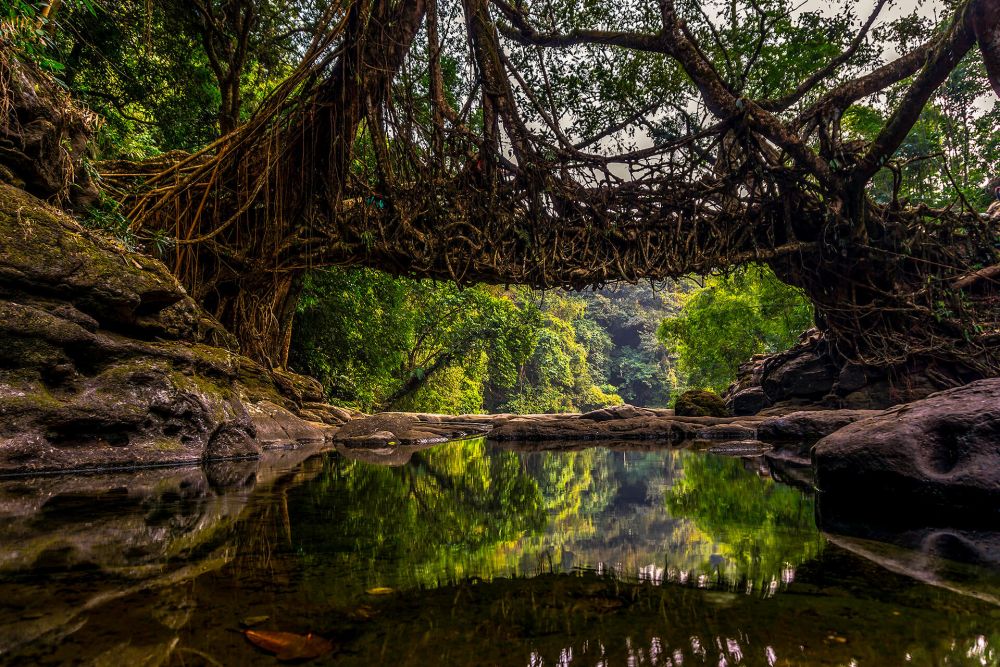

The Living Root Bridges in Mawlynnong, a small village in the East Khasi Hills district of Meghalaya, India, are a testament to the ingenious engineering of the indigenous Khasi people. This remarkable bio-engineering practice has attracted tourists from around the globe and has become an iconic symbol of sustainable tourism.
Although these bridges have been a part of the Khasi culture for centuries, they were relatively unknown to the outside world until the end of the 20th century. It wasn’t until the early 2000s that they started gaining prominence as a tourist destination. The increased interest in eco-tourism and natural wonders put the Living Root Bridges, including the famous double-decker bridge in Nongriat village, on the must-visit list for tourists to Northeast India.
The bridges are formed by training the aerial roots of the Ficus elastica tree across rivers and streams, creating a solid, living structure that can support the weight of human passage. Over time, as tourism to Meghalaya increased, the bridges became a significant draw, with the village of Mawlynnong itself being dubbed "Asia's cleanest village."
The importance of preserving these living bridges has been widely recognized. They are not only an ecological wonder but also a crucial part of the cultural heritage of the Khasi people. This has led to increased efforts to protect and maintain the bridges through community initiatives and sustainable tourism practices.
Recent trends in tourism at the Living Root Bridges have been characterized by a focus on eco-friendly practices. Homestays, guided treks, and educational tours offer visitors an in-depth understanding of this marvel. Responsible tourism initiatives are being adopted, with an emphasis on maintaining low environmental impact while providing economic benefits to the local communities.
Furthermore, the growth of social media and travel blogging has played a pivotal role in putting the Living Root Bridges on the international travel map. Travelers are increasingly seeking out unique and immersive experiences, which has led to a rise in the number of visitors to the Living Root Bridges and the village of Mawlynnong.
Despite the popularity of the Living Root Bridges, preserving this natural heritage poses considerable challenges. The influx of tourists has led to concerns about the sustainability of the region and the need for regulations to ensure that these living structures are not damaged by the increased footfall.
Going forward, the future of tourism at the Living Root Bridges is likely to incorporate stricter environmental safeguards and encourage offbeat and responsible trekking experiences that prioritize the conservation of the bridges for generations to come.
In conclusion, as one of the most astonishing examples of symbiotic human-nature interaction, the Living Root Bridges of Mawlynnong have captured the imagination of travelers worldwide. As a crown jewel of Meghalaya’s tourism, they continue to inspire a vision of coexistence and sustainability.